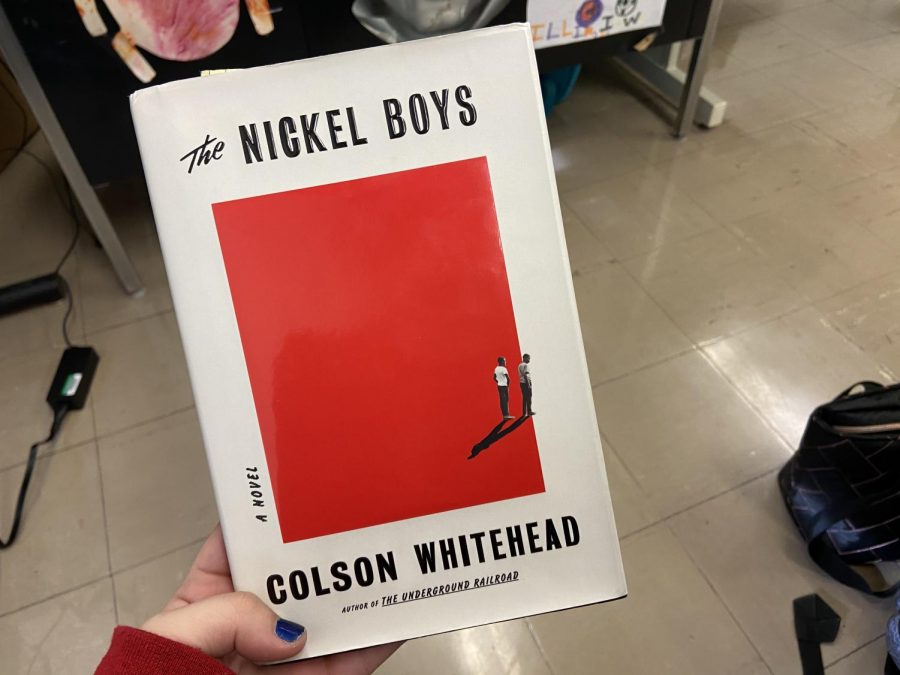Colson Whitehead’s ‘The Nickel Boys’ unearths the bones in America’s racist past
‘The Nickel Boys’ reveals the skeleton’s in the dirt of America’s torrid history.
To read Colson Whitehead’s “The Nickel Boys” is to come face-to-face not with the Civil Rights Movement but to dip a toe in the pool of unknown horrors that everyday Americans — in this case, young black boys — were subjected to without mercy. Through artful character creation and haunting imagery, Whitehead reinvigorates well-known racial issues in a stirring yet cathartic 208-page novel.
The novel centers around Elwood, a studious high school senior preparing to take classes at a local college, and his skeptical, cynical friend Turner. The boys meet at ‘The Nickel Academy,’ a reformatory school for delinquent boys that promises “physical, intellectual and moral training” for their ‘students.’
In truth the school instead submits its inmates to a sadistic staff that beats and sexually abuses the boys, crooked officials and locals who steal food and supplies, and a world where resistance most certainly means a beating — if not death.
Whitehead separates the novel into three parts. He begins by eloquently shaping Elmwood’s character. Raised by a strict grandmother, Elmwood grows up listening to ‘Martin Luther King at Zion Hill,’ an album of Dr. Martin Luther King’s most famous works.
Intensely interested in the Civil Rights Movement, Elmwood is not only smart, but he is also steadfast in his efforts to live out the Reverend’s teachings throughout the novel. Elmwood seems on the path to success until one day he is arrested — for riding in a car while black. This innocent mistake is what causes his arrival to ‘The Nickel Academy.’
This introduces the second phase of the novel in which Elmwood meets Turner. Turner, in contrast to Elmwood, has lived a life of instability. More skeptical of the promise of equality of the Civil Rights Movement than Elmwood, Turner is preoccupied with scheming his way out and, ultimately, surviving.
The second phase is riveting not only because of the grotesque house of horrors that the academy is revealed to be but because of the aptitude with which Whitehead influences the reader. Without going into deep detail about the abuses against Elmwood and the other boys, Whitehead still creates a sense of unease and alarm in the reader that would make one think they were reading something much more graphic.
To describe Elmwood’s first beating, Whitehead says only:
The leather slapped across the ceiling before it came down on your legs, to tell you it was about to come down … Elmwood held on to the top of the bed and bit into the pillow but he passed out before they were done, so when people asked later how many licks he got, he didn’t know.
For me the third installment was the most interesting. Whitehead goes back and forth between a present-day Elmwood and an Elmwood in his final days at the academy. In a frenzy to find out how Elmwood finally escapes, the reader is likely to miss the underlying difference in Elmwood’s adult character.
Yet if one pays close attention, the reader finds that something more than just his age is different about Elmwood. So subtle yet so jarringly clear by the plot-twist ending, Whitehead displays an aptitude for character creation that is unmatched.
This final installment battles the concept of escape and the future implications of what that means for Elmwood and Turner. Whitehead’s elegant diction does more than tell the story of these two boys — it echoes the question that those in bleak situations have asked for eons.
To forbid the thought of escape, even that slightest butterfly thought of escape, was to murder one’s humanity.
Inspired by an article in The Tampa Bay Times about archaeology students at the University of South Florida who were digging up and trying to identify the remains of students who had been tortured, raped and mutilated, then buried in a secret graveyard at the state-run Dozier School for Boys in the Panhandle town of Marianna, Whitehead’s novel proves to be fictional in genre but factual in its prowess for proving a key point of American history — the torrid past of racism hides behind a historical amnesia.
When we refuse to remind ourselves that black bodies remain hidden in the earth of our country, we allow ourselves to ignore the fact that we have not yet scratched the surface of what minorities have suffered since the dawn of our country.
To read Colson Whitehead’s “The Nickel Boys” is to encourage oneself to begin awakening to the reality of American history — the untold stories that weave into its truth and meaning. Gracefully written and riveting in nature, the book receives 5 out of 5 stars.



